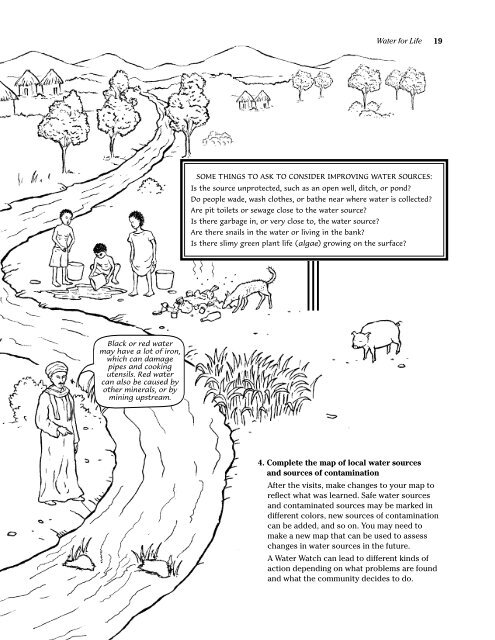Community water security - UN-Water
Community water security - UN-Water
Community water security - UN-Water
You also want an ePaper? Increase the reach of your titles
YUMPU automatically turns print PDFs into web optimized ePapers that Google loves.
<strong>Water</strong> for Life<br />
19<br />
SOME THINGS TO ASK TO CONSIDER IMPROVING WATER SOURCES:<br />
Is the source unprotected, such as an open well, ditch, or pond?<br />
Do people wade, wash clothes, or bathe near where <strong>water</strong> is collected?<br />
Are pit toilets or sewage close to the <strong>water</strong> source?<br />
Is there garbage in, or very close to, the <strong>water</strong> source?<br />
Are there snails in the <strong>water</strong> or living in the bank?<br />
Is there slimy green plant life (algae) growing on the surface?<br />
Black or red <strong>water</strong><br />
may have a lot of iron,<br />
which can damage<br />
pipes and cooking<br />
utensils. Red <strong>water</strong><br />
can also be caused by<br />
other minerals, or by<br />
mining upstream.<br />
4. Complete the map of local <strong>water</strong> sources<br />
and sources of contamination<br />
After the visits, make changes to your map to<br />
reflect what was learned. Safe <strong>water</strong> sources<br />
and contaminated sources may be marked in<br />
different colors, new sources of contamination<br />
can be added, and so on. You may need to<br />
make a new map that can be used to assess<br />
changes in <strong>water</strong> sources in the future.<br />
A <strong>Water</strong> Watch can lead to different kinds of<br />
action depending on what problems are found<br />
and what the community decides to do.
















